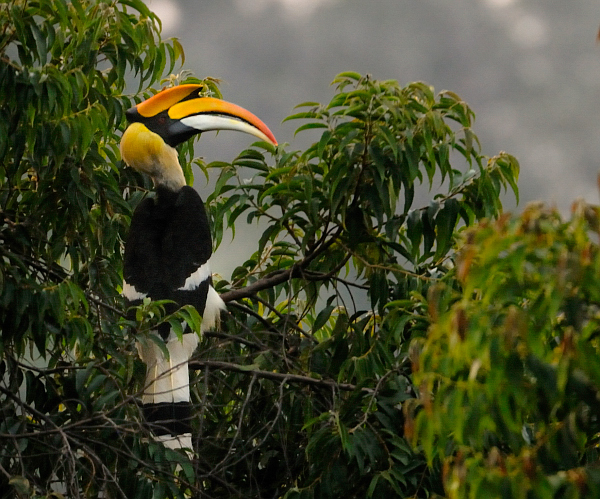Facts About Great hornbill
The great hornbill, also known as the concave-casqued hornbill, is a remarkably large bird native to the Indian subcontinent and Southeast Asia. Renowned for its impressive size and vibrant plumage, this bird also holds significant cultural importance in various tribal rituals. In captivity, these captivating creatures can live for nearly 50 years. While their diet mainly consists of fruits, they also consume small mammals, reptiles, and birds whenever the opportunity arises.
One of the most distinctive features of the great hornbill is its prominent yellow and black casque atop its bill. This hollow structure, which does not appear to have a practical function, is believed to be a result of sexual selection. In flight, their unique wing beats produce a sound that often announces their presence before they come into view.
Great hornbills inhabit dense, old-growth forests in hilly regions. They can be found across India, Bhutan, Nepal, Southeast Asia, Sumatra, and northeastern India. These birds play a crucial role in their ecosystems by dispersing the seeds of various forest trees, particularly figs, which constitute a significant part of their diet.
Typically observed in small groups, these birds are most vocal and active during the breeding season. Males perform elaborate courtship displays, and once paired, the female seals herself inside a hollow tree trunk to lay and incubate her eggs until the chicks are ready to emerge.
Breeding great hornbills in captivity is a challenging endeavor. Their selective mating habits and strong pair bonds present significant hurdles. With habitat loss and hunting posing serious threats to their populations, conservation efforts are vital. The great hornbill is currently classified as vulnerable on the IUCN Red List and is protected under Appendix I of CITES.

 Myanmar (Burma)
Myanmar (Burma)